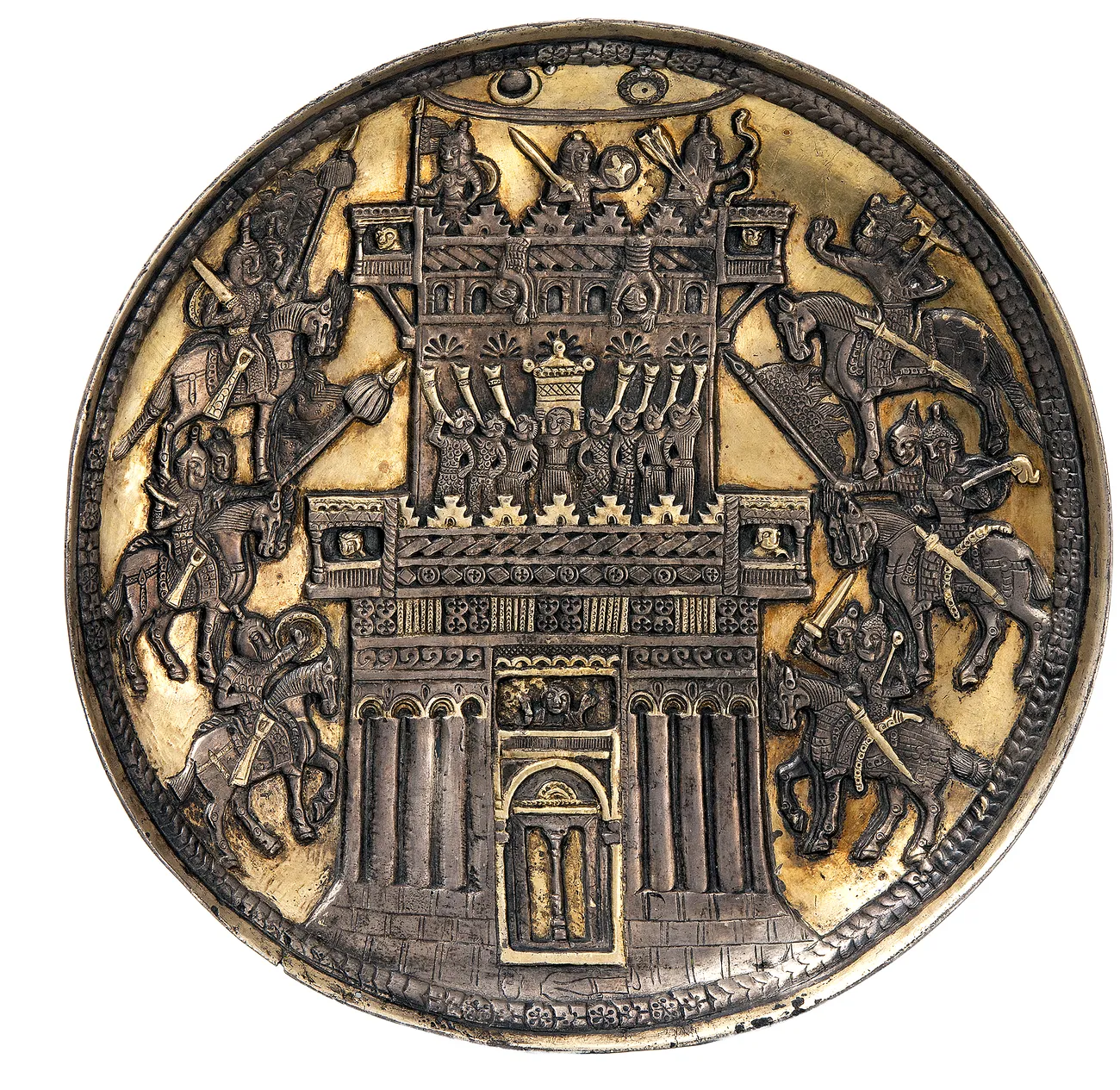1. A silver chalice depicting a scene from a wedding feast with Greek and Eastern peoples with two monkeys playing hourglass-shaped drums and a flute. The chalice has its origins in Central Asia, and the scene on it expresses the idea of unity of various cultures and traditions typical for Oriental Hellenism. It dates back to the 6th – 7th century AD (No. S-75 /VBs-1908).
2. And a gilded silver dish named after the place of its discovery, the village of Anikovo, Perm district, in 1909: the Anikovo dish (No. S-46 /VBs-1880). Experts consider this dish to be of Central Asian origin and date back to the 6th – 7th century AD, but their interpretations of the scene depicted on it differ. One of the earliest and most generally accepted interpretations argues that it shows how the ossuary containing the ashes of the legendary Siyavush are being carried out of a fortress. The ensemble consists of seven trumpet players in the midst of a performance.
You can learn more about the topic in the book-album "The Musical Legacy of Uzbekistan in Collections of the Russian Federation" (Volume VI) from the series "Cultural legacy of Uzbekistan in the world collections".
The general sponsor of the project is the oilfield services company Eriell-Group.


